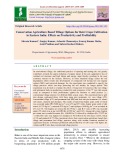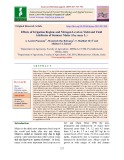
Wheat and maize grains
-
Maize is one of the most important cereals of the world with its average yield of 27.8 q/ha. Maize ranks first among the cereals and is followed by rice, wheat and millets with average grain yield of 22.5, 16.3 and 6.6 q/ha, in India respectively.
 5p
5p  trinhthamhodang11
trinhthamhodang11
 27-04-2021
27-04-2021
 12
12
 2
2
 Download
Download
-
The effect of cyanobacterial isolates on growth performance and yield status of Triticum aestivum, Zea mays and Hordium vulgare was studied. Fifteen cyanobacterial isolates were used individually and in combination to study the effect of their consortium on the growth performance and grain yield of Wheat, Maize and Barley.
 15p
15p  gaocaolon9
gaocaolon9
 22-12-2020
22-12-2020
 7
7
 1
1
 Download
Download
-
Pearlmillet (Pennisetum glaucum L.) is largely grown for grain and fodder purpose under those situations where other crops generally fail. Pearlmillet as a food crop is limited to the developing countries in Asia, and particularly in Africa and ranked sixth in the world followed by rice, wheat, maize, barley and sorghum (Anonymous, 2010-11).
 14p
14p  nguathienthan8
nguathienthan8
 20-10-2020
20-10-2020
 20
20
 1
1
 Download
Download
-
The cultivation of Pleurotus cornucopiae, the branched oyster mushroom is not very common in India but is relished for its pleasant flavour and mild taste. Grain substrates for its spawn production have not been evaluated yet but, wheat grains are commonly used for the same. So, five different grain substrates viz., wheat, barley, kodo, jowar and maize were tested, for spawn run period, mycelia growth, fruit body characters and yield of said mushroom on five different substrates. It was found that minimum time for spawn run was taken by jowar grains (7.
 12p
12p  nguaconbaynhay7
nguaconbaynhay7
 15-08-2020
15-08-2020
 12
12
 1
1
 Download
Download
-
Since ancient times, mushrooms have been considered as a special kind of food. Blue oyster mushroom is a novel species with very large fruit body, blue coloured pinheads becoming light white on maturity, high yielder, palatable with meaty flavour and attractive keeping quality. Different types of cereal grains i.e. maize, sorghum, bajra, wheat and paddy were taken to see their effect on spawn development and Different substrates i.e. wheat straw, paddy straw, mustard straw, sesamum straw and pigeon pea straw significantly influenced the spawn run period, pinhead initiation and yield of H.
 7p
7p  caygaocaolon6
caygaocaolon6
 30-07-2020
30-07-2020
 6
6
 1
1
 Download
Download
-
A field experiment was carried out at ICAR-Indian Agricultural Research Institute, New Delhi for two consecutive years to evaluate the effect of conservation agricultural and nitrogen management practices on productivity, profitability, nutrient-uptake and response functions of N-fertilization in wheat in maize-wheat cropping system. There were six main-plot treatments of tillage and crop establishment techniques, i.e.
 13p
13p  angicungduoc6
angicungduoc6
 22-07-2020
22-07-2020
 20
20
 1
1
 Download
Download
-
An investigation was carried out at Sher-e-Kashmir University of Agriculture Science and Technology of Jammu during 2013-14 and 2014-15, to assess the influence of 4 tillage systems and 3 weed-control practices on weed dynamics and productivity in maize-wheat cropping sequence. In maize, grain yield of maize was statistically at par in continuous conventional tillage (CT-CT) in both maize and wheat and conventional tillage in maize and zero tillage in wheat (CT-ZT).
 7p
7p  angicungduoc6
angicungduoc6
 20-07-2020
20-07-2020
 18
18
 1
1
 Download
Download
-
The rice-wheat rotation is one of the world’s largest agricultural production systems occupying about 85% of the cultivated land in the Indo-Gangetic Plains (IGP) and nearly one-sixth of the total geographical area of the sub continent. The system accounts for about one-third of the area of both rice and wheat grown in South Asia. Rice-wheat rotations produce more than 45% of the region’s food and provide staple grains for nearly 42% of the total population of 1.3 billion of South Asia.
 11p
11p  nguaconbaynhay6
nguaconbaynhay6
 24-06-2020
24-06-2020
 8
8
 0
0
 Download
Download
-
Rice is an important staple food crop of the world. Aerobic rice system is a new way of growing rice that needs less water than low land rice. It is grown like an upland crop (maize, wheat, Oats etc.) in soil, which is un-puddled, non-flooded or saturated. On the basis of this fact an experiment was conducted during kharif season of 2013 and 2014 at Rice Research Station, Bankura, West Bengal, India.
 7p
7p  angicungduoc5
angicungduoc5
 12-06-2020
12-06-2020
 7
7
 2
2
 Download
Download
-
The district Kapurthala is a fully diversified in cultivation of crops as the major cropping sequence followed is paddy-wheat, paddy-potato-muskmelon/watermelon/spring maize/ vegetables. The area under two crops namely sunflower and summer moong is uncertain and depends on the selling rate prevalent in the market at the time of harvesting and ease of marketing. This study was based on a survey conducted on 100 farmers in the district.
 7p
7p  kethamoi5
kethamoi5
 03-06-2020
03-06-2020
 9
9
 0
0
 Download
Download
-
The present investigation was carried out to know the effect of different grains such as paddy, maize, wheat, sorghum and ragi on linear mycelial growth for spawn development, yield performance and biological efficiency of Pleurotus sajorcaju. Maximum mycelial growth of P. sajorcaju was recorded in ragi grains which was on par with sorghum grains followed by wheat grains, paddy grains and maize grains. Among the different grains tested, highest total yield and biological efficiency was recorded in maize grains followed by wheat, paddy, sorghum grains.
 5p
5p  trinhthamhodang1213
trinhthamhodang1213
 29-05-2020
29-05-2020
 11
11
 1
1
 Download
Download
-
The methanol extract from leaves of Saraca indica was investigated to control insect infestation of stored food commodities viz. maize, rice, cowpea and wheat flour during from Ostrinia nubilalis, Spodoptera littoralis, Callosobruchus maculates and Tribolium confusum. After introducing the test insects, stored food samples were fumigated with methanol extract from leaves of Saraca indica at 500 μg/mL (ppm). The methanol extract significantly enhanced feeding deterrence in insects and reduced the grain damage as well as weight loss in fumigated food samples infested with all insects.
 16p
16p  chauchaungayxua5
chauchaungayxua5
 05-05-2020
05-05-2020
 8
8
 2
2
 Download
Download
-
The methanol extract from leaves of Aegle marmelos was investigated to control insect infestation of stored food commodities viz. maize, rice, cowpea and wheat flour during from Ostrinia nubilalis, Spodoptera littoralis, Callosobruchus maculates and Tribolium confusum. After introducing the test insects, stored food samples were fumigated with methanol extract from leaves of Aegle marmelos at 500 μg/mL (ppm). The methanol extract significantly enhanced feeding deterrence in insects and reduced the grain damage as well as weight loss in fumigated food samples infested with all insects.
 15p
15p  chauchaungayxua5
chauchaungayxua5
 05-05-2020
05-05-2020
 10
10
 2
2
 Download
Download
-
A field experiment was conducted to evaluate the options of best weed management practices in maize-wheat cropping system during kharif season, 2015 and 2016 at the District seed farm, (AB Block), Kalyani, Bidhan Chanra Krishi Viswavidalaya, Nadia, and West Bengal.
 7p
7p  nguathienthan4
nguathienthan4
 18-04-2020
18-04-2020
 15
15
 2
2
 Download
Download
-
The efficacy of sixteen grain protectants @ 5% was compared against Sitophilus oryzae in storage. Adult weevils were exposed to the paddy, wheat and maize grains treated with the protectants. The mortality was recorded at 1, 2, 7, 14, 21 and 28 days of exposure. Subsequently, all adults were removed and the treated grains remained at the same condition for 56 days. After this interval, the F1 adult female progeny was counted. The protectants caused equally higher insect mortality on paddy and maize grain at 1 day of application.
 8p
8p  nguathienthan4
nguathienthan4
 18-04-2020
18-04-2020
 11
11
 1
1
 Download
Download
-
Maize (Zea mays L.) is the third most important cereal in India after rice and wheat. It is grown in 178 million hectares globally in about 160 countries and contributes to 50% of global grain production (1,170 million MT). Area under maize is consistently, showing increasing trend as there is high demand for maize as it is used as input for large number of products. This demand needs to be met out from shrinking land resources and other production constraints.
 5p
5p  caygaocaolon4
caygaocaolon4
 04-04-2020
04-04-2020
 28
28
 2
2
 Download
Download
-
The results of testing the International Maize and Wheat Improvement Center’s (CIMMYT’s) hybrid combinations, developed from hybrid 790 F2:3 lines and 10 parental lines, using two testers (CML451 and CLO2450) under optimal and managed drought conditions in Ninh Thuan, Vietnam, show that the average grain yield of the biparental (BP) groups of heterosis groups A and B is, respectively, 2.58-3.65 tons/ha and 2.56-2.76 tons/ha in drought conditions, and 4.24-5.02 tons/ha and 5.41-5.93 tons/ha in wellwatered conditions, respectively.
 7p
7p  12120609
12120609
 02-04-2020
02-04-2020
 19
19
 1
1
 Download
Download
-
The experiment was conducted under rainfed condition at Agricultural Research Station, Madhira during early rabi 2016 using 40 ICRISAT sorghum genotypes. Estimation of variation, phenotypic and genotypic correlations along with path analysis was calculated for the material under study. High amount of variability was recorded in the material for various traits under study. Plant height showed positive significant association with number of leaves per plant, leaf length, leaf width, ear length, straw weight, 100 seed weight and grain yield per plant.
 7p
7p  nguaconbaynhay4
nguaconbaynhay4
 22-03-2020
22-03-2020
 18
18
 2
2
 Download
Download
-
In conventional tillage, the traditional practice of opening and turning the soil greatly contributes towards the quick oxidation of organic matter in the soil, quantitative loss of residual soil moisture and high labour and energy input thereby resulting in the poor economic returns for the farmers. However, in some situations tillage causes the soil degradation which results into development of compacted soil having low soil organic carbon (SOC) and restricted drainage.
 12p
12p  trinhthamhodang3
trinhthamhodang3
 14-02-2020
14-02-2020
 20
20
 0
0
 Download
Download
-
Maize (Zea mays L.) is one of the most important cereal crop species and is grown throughout a wide range of climates. In India, maize is the most important food crop after rice and wheat. Since 1950, the area, production and productivity of maize have increased more than 3.4, 12 and 4.5 times from 3.2 m ha,1.7 m t and 547 kg/ ha to current level of 8.17 m ha,19.33 m t and 2414 kg/ha, respectively due to increase in maize demand for diversified uses. Maize could be grown in wide ranges of soils and climate throughout the year.
 7p
7p  trinhthamhodang3
trinhthamhodang3
 12-02-2020
12-02-2020
 15
15
 0
0
 Download
Download
CHỦ ĐỀ BẠN MUỐN TÌM









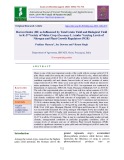

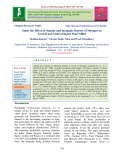
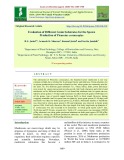
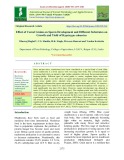
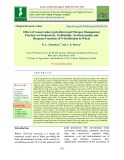
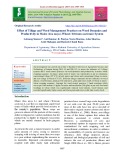

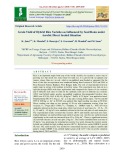
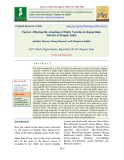
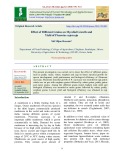
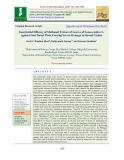
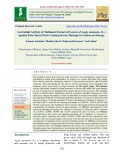
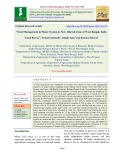
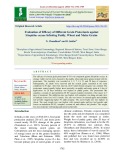
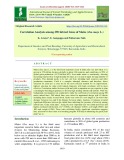
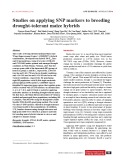
![Studies on genetic variability, correlation and path analysis in yellow pericarp sorghum [sorghum bicolor (L.) Moench] genotypes Studies on genetic variability, correlation and path analysis in yellow pericarp sorghum [sorghum bicolor (L.) Moench] genotypes](https://tailieu.vn/image/document/thumbnail/2020/20200322/nguaconbaynhay4/135x160/3971584869562.jpg)
